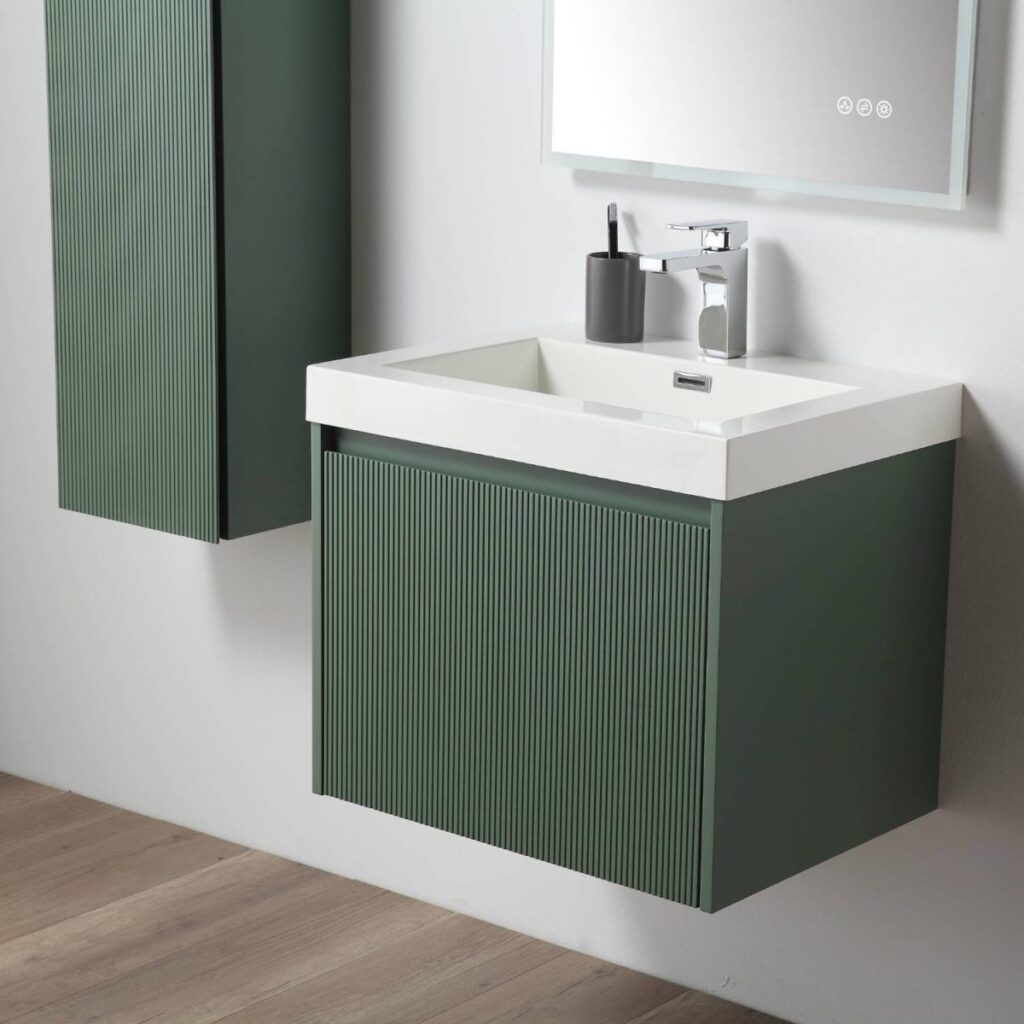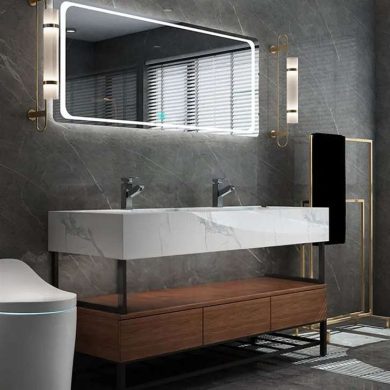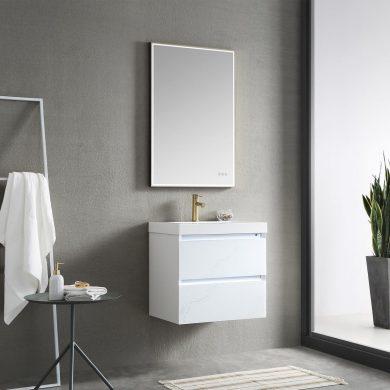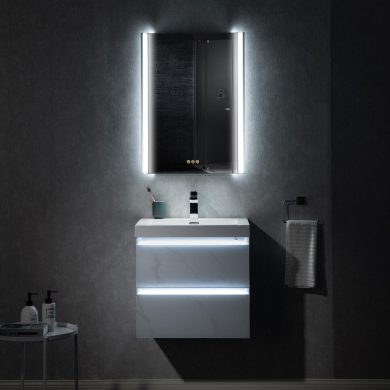Common Problems with Bathroom Vanities and How to Solve Them
Bathroom vanities are a key element in any bathroom, providing both style and functionality. However, like any other part of your home, they can encounter issues over time. Whether it’s a minor inconvenience or a more significant problem, knowing how to identify and address common vanity issues can save you time, frustration, and money. Here’s a guide to the most common problems with bathroom vanities and how to fix them.
1. Water Damage
One of the most frequent issues homeowners face with bathroom vanities is water damage. Due to constant exposure to moisture, vanities—especially those made of wood or laminate—can warp, swell, or develop mold if not properly maintained.
Signs of Water Damage:
- Swollen or warped cabinet doors and drawers
- Peeling or bubbling laminate
- Discoloration or soft spots on the vanity surface
- Musty odors or visible mold
Solutions:
- Prevention: Seal the edges of your vanity, especially around the sink, with waterproof caulking to prevent water from seeping into the wood or laminate. Regularly check for leaks in your sink or faucet to avoid water pooling in or around the vanity.
- Repair: If the damage is minimal, you can sand down warped areas, repaint, or reseal the wood. For more severe cases, especially if mold is present, you may need to replace the affected parts of the vanity or even the entire unit.
2. Poor Storage Space
Another common issue with bathroom vanities is a lack of functional storage. Many vanities come with limited shelving or awkwardly placed drawers, making it difficult to organize toiletries, towels, and other essentials.
Signs of Poor Storage:
- Cluttered countertops
- Difficulty accessing items due to limited space
- Wasted space under the sink or inside cabinets
Solutions:
- Upgrade Storage Options: Consider installing pull-out drawers, shelf organizers, or wire baskets inside your vanity to maximize space. You can also use drawer dividers to keep smaller items like cosmetics or toiletries neatly arranged.
- Choose a Vanity with Better Storage: If your current vanity is beyond improvement, consider replacing it with one that offers more efficient storage solutions, such as deep drawers, open shelving, or double sinks with separate storage.
3. Vanity Sink or Faucet Leaks
Leaking faucets or sink drains can cause significant damage to your vanity and the surrounding bathroom area if not addressed promptly. Over time, leaks can lead to mold growth, wood rot, and increased water bills.
Signs of Leaks:
- Pooled water under the sink or around the faucet
- Water stains or discoloration inside the vanity cabinet
- Dripping sounds even when the faucet is turned off
Solutions:
- Fix Leaks Quickly: If you notice any signs of a leak, tighten the faucet or pipe connections. In some cases, you may need to replace worn-out washers, gaskets, or the faucet itself. For leaks inside the vanity, check the sink’s drainpipes and P-trap for loose connections or cracks.
- Install a Water-Resistant Liner: Placing a water-resistant liner inside your vanity’s cabinet can help protect it from potential water damage in case of future leaks.
4. Scratches and Surface Damage
Daily use can take a toll on your vanity’s surface, especially if it’s made from materials like wood or laminate. Scratches, dents, and stains can make your vanity look worn out and decrease its overall aesthetic appeal.
Signs of Surface Damage:
- Visible scratches, dents, or chips on the countertop or cabinet
- Stains from water, soap, or cosmetics
- Discoloration or fading due to UV exposure
Solutions:
- Minor Scratches: For small scratches on wood or laminate vanities, use wood filler or a touch-up pen to repair the surface. Buff out scratches on stone countertops with a specialized polishing compound.
- Stains: For water or soap stains, clean the surface with a mixture of mild detergent and water. Avoid abrasive cleaners, as they can cause further damage.
- Protect Your Vanity: To prevent future damage, use coasters, trays, or mats to protect the surface from water, cosmetics, and other potential hazards. Applying a protective sealant can also help preserve the vanity’s finish.
5. Poor Ventilation Leading to Mold and Mildew
Bathrooms are naturally humid environments, and if your vanity isn’t properly ventilated, mold and mildew can develop inside cabinets or drawers. This is especially common in vanities with enclosed storage areas where moisture can get trapped.
Signs of Poor Ventilation:
- Musty smell coming from inside the vanity
- Visible mold or mildew on the walls, cabinet doors, or drawers
- Dampness or condensation inside the vanity
Solutions:
- Improve Ventilation: Make sure your bathroom has proper ventilation by installing an exhaust fan or ensuring your current fan is working effectively. You can also leave cabinet doors or drawers slightly open after a shower to allow airflow and reduce moisture buildup.
- Mold Removal: If you notice mold inside your vanity, clean the affected area with a mixture of water and vinegar or a mold-removal product. In severe cases, you may need to replace mold-infested parts of the vanity.
6. Poor Installation or Misalignment
Vanities that are poorly installed or not properly aligned can lead to a host of problems, including uneven countertops, misaligned doors or drawers, and even plumbing issues. This can not only affect the functionality of your vanity but also its overall look.
Signs of Installation Issues:
- Uneven gaps between drawers and cabinet doors
- Wobbly or unlevel countertops
- Squeaky or difficult-to-open drawers
Solutions:
- Adjust Alignment: If doors or drawers are uneven, adjust the hinges or tracks to ensure they open and close smoothly. For misaligned countertops, you may need to relevel the vanity by tightening screws or using shims.
- Hire a Professional: If the vanity installation was poorly executed and is causing major issues, it’s best to hire a professional to correct the alignment or re-install the vanity properly.










Add comment